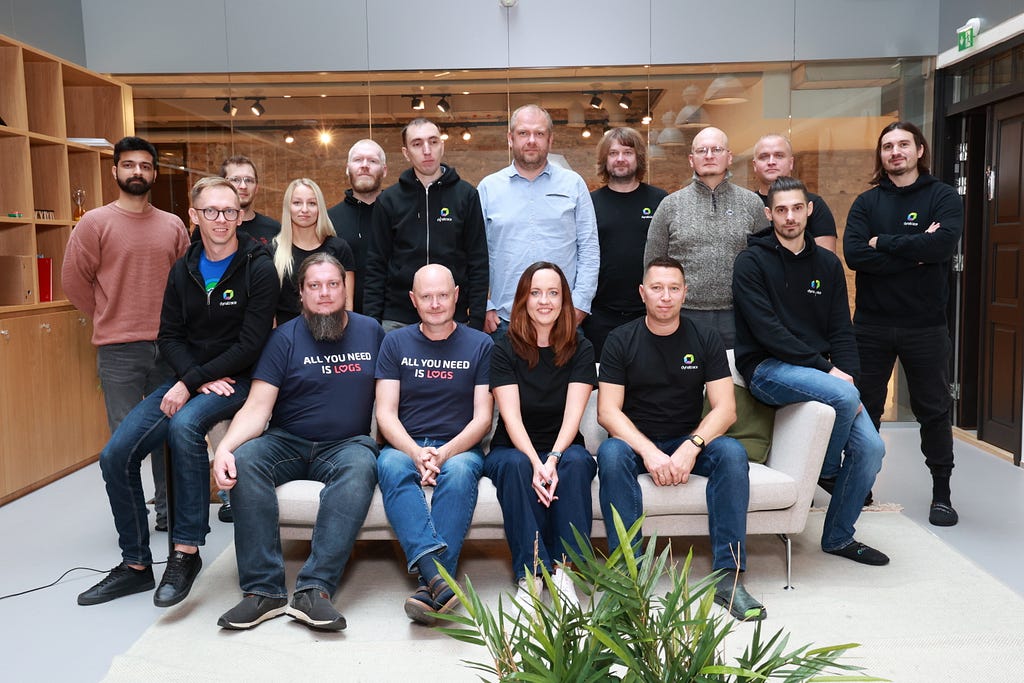
Empowering Dynatrace employees with the Autonomy Principle
Giving everyone the ability to implement change and pursue projects with a great degree of freedom.

One of the key cultural aspects of Dynatrace is the Autonomy Principle, which gives employees at any level the ability to implement change and pursue projects with a great degree of freedom. The keyword for implementing this successfully, however, is that there is a “degree” of freedom; because if we had full freedom — well, with over 2000 employees and growing — we would just descend into chaos.
As a member of the Agile Competence Center, I have a great deal of experience with making sure that this autonomous mindset is shared at every level of the company. And I’ve seen first-hand what benefits it brings, for example:
- Local decisions can be more efficient. Since you don’t need to go through a whole hierarchy of people to get decisions approved, things happen faster and more efficiently.
- Motivation among employees is increased. Employees feel competent in their ability to make decisions and feel trusted by the company.
The autonomy principle is truly celebrated by employees at Dynatrace but it is a concept that is not very straightforward to understand for newcomers. Over time, however, this way of working becomes second nature to many and that’s when you truly start reaping the benefits.
Let’s look into what it really means to work with an autonomous mindset at Dynatrace.
Being autonomous as an employee is not the same as being autonomous as a country
An autonomous country is one that can conduct its policies as it wishes, including foreign relations, security policy and budget; it can also choose to participate in various international frameworks. As an employee (at Dynatrace or elsewhere), you aren’t autonomous in this sense: You’re bound by your work contract, national work laws your team membership and the relationship with your leader(s).
So, you don’t (on your own) have the authority to govern your relationship and transactions with customers and institutions, collect taxes from your co-workers or spend company money as if it were your own (or rather, no, actually do that instead of spending it as if it were not your own).
It’s also not the same as being independent
Being “autonomous” could mean that you don’t depend on anyone for your sustenance. For example, if you’re a farmer with your own little power plant and sufficient knowledge to maintain or even build your own buildings and machines, you might be considered autonomous in that sense (I have an uncle like that. He’s also a bit crazy, but that’s probably just a side effect of this autonomy). As an employee, you aren’t autonomous in that way: Depending on your area of expertise you’ll need support from a lot of different people to get food on your table, like IT, support, office management, people management, etc. That’s actually one of the main rationales for forming a company, an enterprise, in the first place.
It’s more like being an autonomous car
I’m not comparing your unique individuality with a computer program, just to get this straight right off the bat. That being said, I think that an example of the use of the word “autonomous” that comes closer to what we mean is when we talk about autonomous cars (as opposed to non-autonomous ones).
An autonomous car is bound by a strict set of rules, mainly the national traffic laws, but also heuristics like “don’t kill the little children” and “better break myself than hurt someone” (I assume, I never programmed such a car myself). However, apart from these rules, the car (conceptually) only understands one thing: a clear goal (like, a vision). I need to be there, not here.
It’s up to the car how to further that goal: it’s responsible for its decisions. A non-autonomous car doesn’t have to think at all. It just does as it’s told by a driver who presumably knows what they want. It may help the driver in various ways by conveying additional sensory information and metrics and such, but in the end, it has no responsibility whatsoever.

Photo by Steve Freling of Motor Oomph
Sometimes, you have to follow orders
Working autonomously means in practice that your daily life will be a mixture of both, autonomous and non-autonomous mode. Sometimes, you have to simply do what you’re told by your lead or those you report to. It’s something that can happen in any company. However, and that’s the whole point of formulating “autonomy” as a cultural principle at Dynatrace, it shouldn’t be your main modus operandi.
It implies that you have a clear goal or a plan
Ideally, you’d have an extremely clear picture of a totally comprehensible vision, a goal, so that you know what is expected from you. Then your task should be to find the “best” way to help that vision come true (while always staying inside the bounds of the rules and guideposts that apply). The fact that “autonomy” has such a central place in the cultural guidance at Dynatrace shows that you’re encouraged to think this way for whatever task you currently have: Does what I’m currently doing further the vision, the goals of the company (i.e., all of us)? You’re responsible to make sure of that.
So, when you think that a new tool, a new process, a new way of selling, a new programming paradigm, anything at all, would help us reach our goals better / faster / cheaper / more sustainably, you can and should take it upon yourself to drive that change. If you think that we’re doing something that holds us back and might lead us into a wrong direction, the same applies.
Of course, a necessary prerequisite for this is that you have a leader who conveys that vision clearly to you and at the scope that you need. Make sure to insist on getting that.
And it does not mean that you don’t need anybody
Another prerequisite for arriving at a sound decision is to involve other people in your thought process. Consulting with your peers isn’t optional: you’ll discover that there’s always something that you didn’t think of beforehand. You never know all the constraints of the problem you’re thinking about. Since you’re responsible for your actions, it’s absolutely in your own best interest to make sure you’re not missing anything or would even do more harm than good with your initiative.
And finally, it means taking on responsibility
It might seem scary to feel responsible for something, but It’s great to take on responsibility, the rewards far outweigh the risks. Make sure to consult with your peers and document your decisions, especially if there were counterarguments during the consultation phase.
The autonomy principle gives every employee the opportunity to challenge themselves, stand behind their ideas and gain motivation through responsibility. And this is not only beneficial to the employee, who can learn new skills or improve upon them, but also for the company, which garners innovation thanks to highly motivated employees.
Empowering Dynatrace employees with the Autonomy Principle was originally published in Dynatrace Engineering on Medium, where people are continuing the conversation by highlighting and responding to this story.


